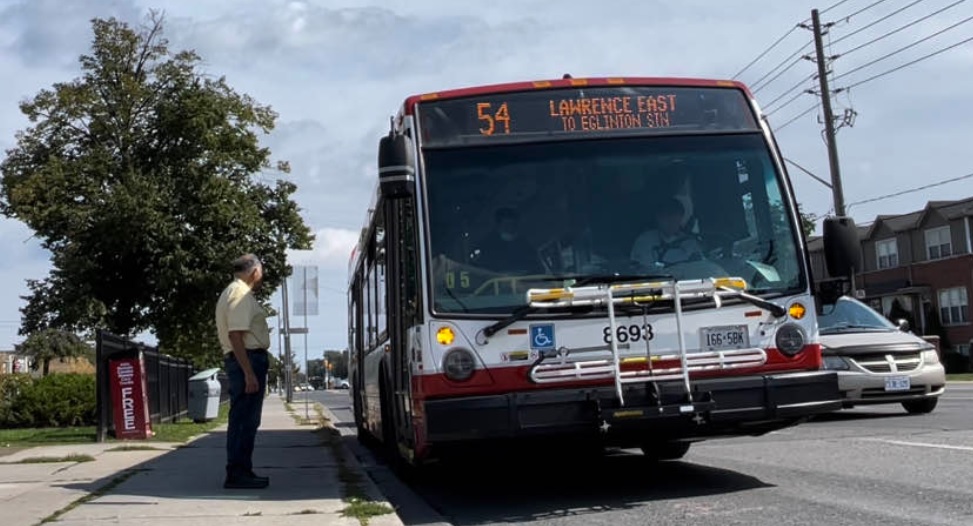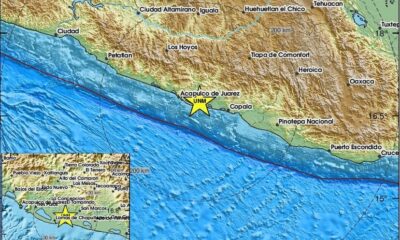Local News
Olivia Chow’s motion to speed up RapidTO busway proposals passes at Toronto city council

Mayor Olivia Chow was hoping to put the “rapid” in RapidTO at city council on Tuesday with a new motion aimed at getting more busways built across the city and speeding up the process.
The motion, which was passed by council with a vote of 23-3, asks the General Manager of Transportation Services to initiate roadway-specific studies, public consultation and design of the four different roadways that have been proposed for surface transit priority.
The RapidTO plan, also know as the Surface Transit Network Plan, dates back to 2019 and is the City’s program that guides the study, evaluation and delivery of bus and streetcar improvement projects in Toronto.
The roadways are Finch Avenue East between Victoria Park Avenue and McCowan Road, Dufferin Street between Wilson Station and Dufferin Gate, Lawrence Avenue East between Victoria Park Avenue and Morningside Avenue, and Steeles Avenue West between Pioneer Village Station and Bathurst Street.
The motion also suggests bringing study findings and recommendations to the appropriate committee and city council for approval. The timing of when the studies would be brought forward is unknown.
“I think waiting for four, five years is long enough. There’s been a lot of consultations. It is not just painting the road. It is about right turn, left turn. So there are some things to work out with the neighbourhood, so I see that, I get that. It’s important my motions direct staff with the support,” said Chow prior to the meeting Tuesday. “Let’s get on with it.”
The first priority bus lanes were implemented in 2020 on a portion of Eglinton Avenue East. According to the city’s own data, travel times went down by as much as five minutes in the afternoon while reliability went up 10 per cent.
“We’re investing in a lot of increased services. Increasing more services means nothing if the bus is stuck in traffic … it doesn’t work,” said Chow.
There are also three other projects where roadway-specific studies have been initiated including Jane Street, Steeles Avenue, and Victoria Park Avenue.
Work on a potential Jane Street busway has been advanced the furthest so far with a report expected to be brought to the Executive Committee in Q2 this year that would seek council endorsement to implement the recommended design.
Some city councillors were unsure what impact the busways would have on congestion throughout the city.
“Toronto is one of the most congested cities on the entire continent, and I’m not necessarily convinced that RapidTO in every instance is actually going to alleviate congestion. I think in some instances it might make it worse,” said Brad Bradford, Beaches-East York Councillor, prior to the vote.
Bradford did vote in favour of the motion, unlike Councillor Stephen Holyday of Etobicoke Centre, who said prioritizing busways could have a big impact on congestion, and that means the war on the car is “alive and well in Toronto.”
“They’re looking at a five per cent time savings and a 10 per cent increase in reliability,” said Holyday. “I have to wonder how much benefit is being brought by these lanes compared to the enormous cost and the enormous pressure that is being put on the automobile and drivers that are stuck with the one remaining lane on the street.”
Meanwhile, Councillor Jamaal Myers, who represents Scarborough Southwest, said the TTC is getting $1.2 billion in the proposed budget this year and it doesn’t make sense to spend that money on buses stuck in traffic.
“Everyone understands this — including my council colleagues — and it’s time we really just get on with it.”
Meyers adds the Jane Street busway would help the 40,000 people who use that route everyday and could hopefully be operating by the end of the year.
“This nonsense about the war on the car, it’s dated. It’s really something that you would hear a lot in perhaps councils of prior years. I think this council’s a bit more forward thinking. We understand that this is a different city, and we are committed to actually meeting at the challenges of the city and not just delaying things.”
According to city data, approximately 70 per cent of all Toronto Transit Commission journeys include a surface transit trip.
TTCRiders, a TTC advocacy group, celebrated the move by city council.
“Hundreds of thousands of riders rely on bus and streetcar routes every day to get to work, to school, and home to their families on time,” said Shelagh Pizay-Allen, Executive Director of TTCriders, in a statement. “Transit users have been promised more surface priority lanes for years. City council’s decision to speed up this plan is welcome news.”












